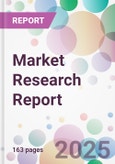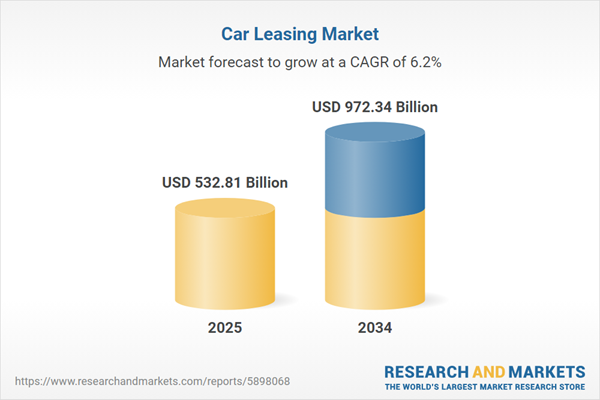Car leasing includes a variety of functions, such as vehicle leasing and financing, health, and safety management, vehicle maintenance, licensing and enforcement, driver management, speed management, supply chain management, accident, and subrogation management, vehicle telematics, fuel management, and vehicle observation. Car leasing is a function that enables companies (that rely on business transport) to eliminate or reduce the risks linked with vehicle investment, improve efficiency and productivity, reduce overall transport, and staff costs and ensure total compliance with government legislation.
The car leasing market growth is expected to be driven by factors such as rising urbanisation and the rise of smart city initiatives around the world as smart cities require a proficient transportation system that aids avoid traffic jams and declining commute time. A major portion of the population utilises more vehicles, which aggravates road traffic blocking and parking concerns in urban zones. This has resulted in the prompt development of the public transportation system. The rise in the number of young consumers and demand for mobility among consumers with relatively low spending power is also boosting the car leasing market expansion. Furthermore, an increase in maintenance costs, taxes, and fuel costs associated with car ownership is prompting consumers to lease and use cars.
Key Trends and Developments
Growing demand for EV leasing; the rise of subscription-based models; the integration of advanced technologies; and the rising popularity of personalised and flexible leasing options are the major trends in the car leasing marketCar Leasing Market Trends
One of the prominent trends in the car leasing market is the global push towards sustainability and the imperative to reduce carbon emissions, which is leading to an increased interest in the adoption of electric and hybrid vehicles (EVs). Electric and hybrid vehicles typically have higher upfront purchase prices compared to conventional vehicles, mainly due to the cost of battery technology. Leasing can mitigate this barrier by spreading the cost over the lease period and often demands a lower initial investment than purchasing. Further, many governments offer incentives, rebates, or tax breaks for owning or leasing electric and hybrid vehicles. Leasing an EV allows consumers and businesses to take advantage of these financial incentives, making them more affordable, and this further contributes to the car leasing market development.Maruti Suzuki collaborated with SMAS Auto Leasing to launch a vehicle subscription program in February 2023. Through this program, customers can enjoy the benefits of driving a Maruti Suzuki vehicle without the long-term commitment and expenses associated with purchasing a car. The collaboration between these two companies signifies an innovative approach to meet the changing transportation needs and preferences of consumers.
Market Segmentation
“Car Leasing Market Report and Forecast 2025-2034” offers a detailed analysis of the market based on the following segments:Market Breakup by Type
- Private Lease
- Business Lease
Market Breakup by Lease Type
- Close Ended Lease
- Option to Buy Lease
- Sub-Vented Lease
- Others
Market Breakup by Service Provider Type
- OEM
- Bank Affiliated
- Nonbank Financial Companies (NBFCs)
Market Breakup by Tenure
- Short-Term
- Long-Term
Market Breakup by Region
- North America
- Europe
- Asia-Pacific
- Latin America
- Middle East and Africa
The business lease segment is expected to occupy a significant car leasing market share during the forecast period. In recent years most organisations have been inclined towards leasing a car to their upper management employees. This allows the employees to go at their leisure rather than using company transportation. Further, when a team member's service in their organisation is completed, they have the choice to keep the vehicle. This allows the team member to save significant money as the organisation provides a brand-new car.
The private lease segment is also expected to experience growth in the automotive fleet leasing market as there is a growing preference for accessing services over owning assets, especially among younger consumers. This shift is evident in the rise of the sharing economy and subscription services and private leasing aligns with this trend, offering the benefits of a car without the responsibilities and costs of ownership. Private leasing typically involves a fixed monthly payment that covers the use of the vehicle, maintenance, and often insurance and taxes and this predictability is appealing to individuals who prefer budgeting certainty and want to avoid unexpected costs associated with repairs and maintenance.
The OEM segment is a major shareholder in the car leasing market due to brand trust and loyalty
The car leasing market demand is driven by the OEM service provider as consumers often have a certain level of trust and loyalty towards specific car brands and leasing directly from an OEM can enhance the sense of security and assurance about the quality and performance of the vehicle. OEMs can also offer integrated services, including maintenance, repairs, and warranties, as part of the leasing contract and this one-stop-shop approach is convenient for consumers and can ensure that the vehicle is serviced by trained technicians using genuine parts.Furthermore, bank affiliated service providers are expected to witness considerable growth in the automobile leasing market, as banks are perceived as stable and trustworthy financial institutions. Customers might feel more secure entering a leasing agreement with a well-established bank, especially for a commitment as significant as a car lease. Banks also have access to substantial capital and can offer competitive interest rates and favorable terms on leasing contracts and their financial leverage allows them to provide attractive deals that might be harder for smaller, non-bank leasing companies to match.
Car Leasing Market Analysis by Region
North America and Europe are expected to be among the leading regions in the car leasing market because of the low interest rates offered by leasing companies in this region. Centralisation of fleet sourcing and control is driving the market in North America. Key players are currently working to centralise their car sourcing and management, ensuring better consistency and transparency of spending, and allowing better control and strategic focus to be achieved.After North America, the vehicle leasing market in Europe is one of the most profitable markets with most global service providers providing all the primary fleet services starting from vehicle orders to disposal. Several other leading suppliers have also begun offering mobility solutions, such as ride-sharing. The regional market is also being aided by the rising trend of the creation of a single flexible budget for workers, which they are free to spend on all travel needs. Some of the companies further combine fleet and travel categories under a single mobility administrator.
Competitive Landscape
The market players are increasing their collaborative efforts and partnerships to gain a competitive edge in the marketThe market players are strategically launching new leasing offers for electric vehicles (EVs) in countries that exhibit significant potential for EV adoption. As awareness of environmental issues grows, there is an increasing demand for sustainable transportation options. Countries showing potential for EV adoption often have supportive government policies, infrastructure for charging, and an environmentally conscious consumer base. Such factors are expected to have a positive influence on the car leasing market.
Table of Contents
Companies Mentioned
The key companies featured in this Car Leasing market report include:- ALD Automotive Pvt Ltd
- Arval BNP Paribas Group
- LeasePlan Corporation N.V
- Wheels Inc.
- ORIX Corporation
Table Information
| Report Attribute | Details |
|---|---|
| No. of Pages | 163 |
| Published | August 2025 |
| Forecast Period | 2025 - 2034 |
| Estimated Market Value ( USD | $ 532.81 Billion |
| Forecasted Market Value ( USD | $ 972.34 Billion |
| Compound Annual Growth Rate | 6.2% |
| Regions Covered | Global |
| No. of Companies Mentioned | 6 |









